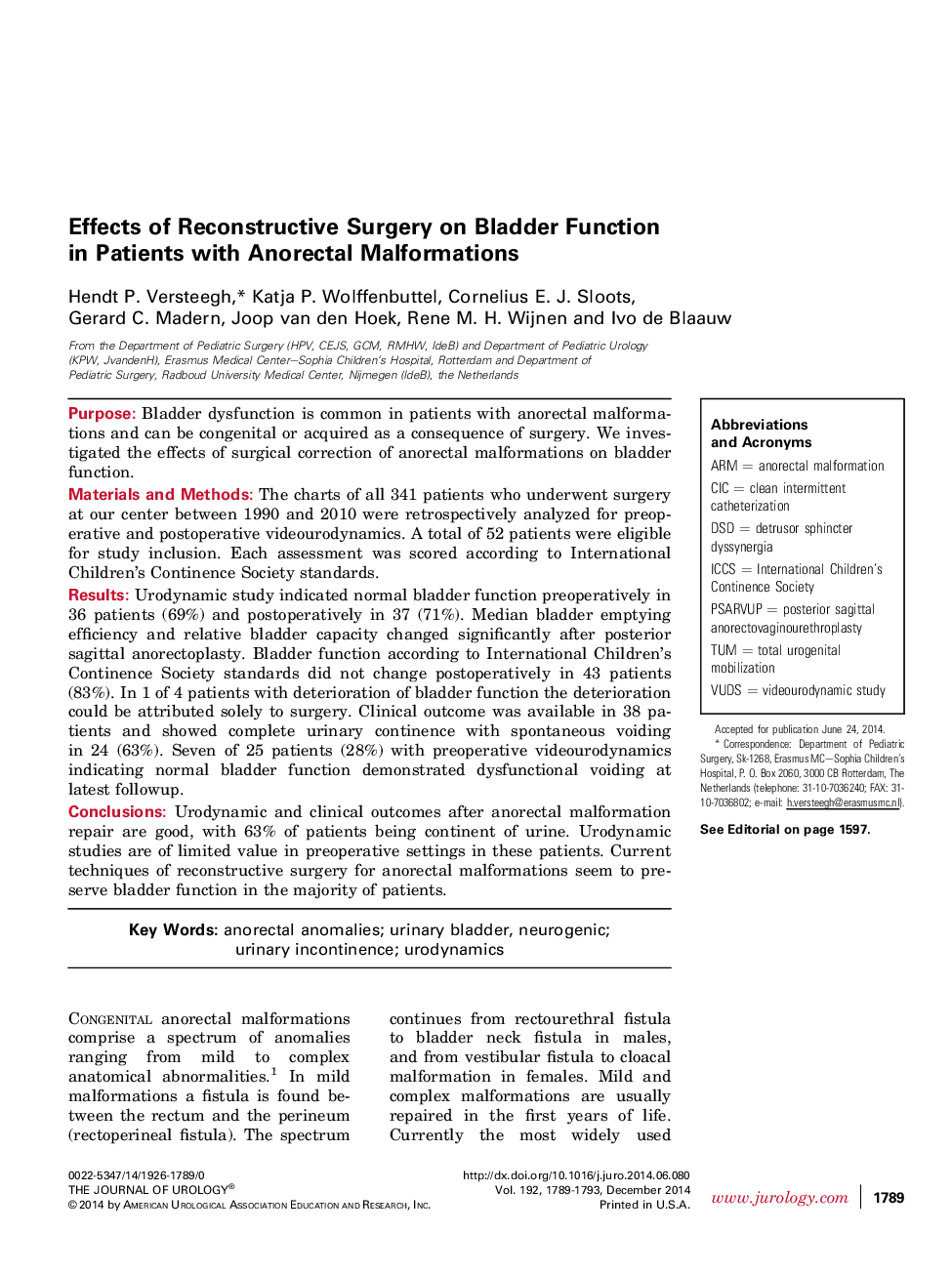| Article ID | Journal | Published Year | Pages | File Type |
|---|---|---|---|---|
| 3863303 | The Journal of Urology | 2014 | 5 Pages |
PurposeBladder dysfunction is common in patients with anorectal malformations and can be congenital or acquired as a consequence of surgery. We investigated the effects of surgical correction of anorectal malformations on bladder function.Materials and MethodsThe charts of all 341 patients who underwent surgery at our center between 1990 and 2010 were retrospectively analyzed for preoperative and postoperative videourodynamics. A total of 52 patients were eligible for study inclusion. Each assessment was scored according to International Children’s Continence Society standards.ResultsUrodynamic study indicated normal bladder function preoperatively in 36 patients (69%) and postoperatively in 37 (71%). Median bladder emptying efficiency and relative bladder capacity changed significantly after posterior sagittal anorectoplasty. Bladder function according to International Children’s Continence Society standards did not change postoperatively in 43 patients (83%). In 1 of 4 patients with deterioration of bladder function the deterioration could be attributed solely to surgery. Clinical outcome was available in 38 patients and showed complete urinary continence with spontaneous voiding in 24 (63%). Seven of 25 patients (28%) with preoperative videourodynamics indicating normal bladder function demonstrated dysfunctional voiding at latest followup.ConclusionsUrodynamic and clinical outcomes after anorectal malformation repair are good, with 63% of patients being continent of urine. Urodynamic studies are of limited value in preoperative settings in these patients. Current techniques of reconstructive surgery for anorectal malformations seem to preserve bladder function in the majority of patients.
